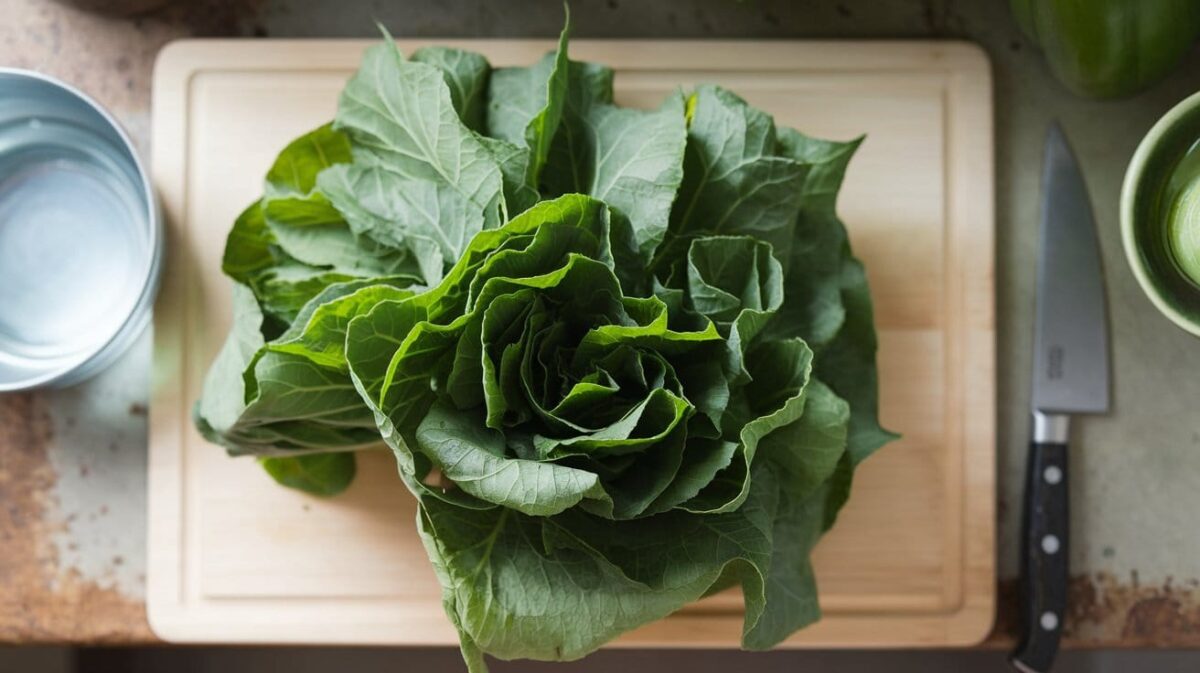Ever looked at a pumpkin plant and wondered if those lush green leaves are edible? 🌿
You’re not alone — and the answer might surprise you!Pumpkin leaves are one of nature’s most underrated superfoods — tender, flavorful, and bursting with nutrients. Commonly enjoyed across Africa, Asia, and the Caribbean, these vibrant greens are packed with vitamin A for sharp vision, vitamin C for strong immunity, and calcium and iron for healthy bones and blood.
Whether stir-fried with garlic, simmered in hearty soups, or blended into smoothies, pumpkin leaves offer a mild, earthy taste and a long list of health benefits — from boosting digestion to lowering cholesterol and supporting blood sugar control.
In this complete guide, you’ll discover everything you need to know about pumpkin leaves — their nutritional value, health benefits, culinary uses, and simple cooking techniques to bring out their best flavor.
👉 Ready to turn this humble garden green into your next favorite superfood? Let’s dive in!
What Are Pumpkin Leaves?
Pumpkin leaves are the edible leafy greens from pumpkin plants, widely used in various cuisines. Known for their tender texture and mild flavor, these leaves are especially valued in African, Asian, and Caribbean dishes. While often overlooked, they offer significant nutritional benefits.
Key Characteristics:
- They have a vibrant green color with a heart-shaped structure.
- Their surface feels slightly rough due to fine hairs, which soften when cooked.
- Their mild, earthy flavor complements a variety of recipes.
In addition, tropical varieties like Cucurbita moschata produce leaves that are softer and more suitable for cooking. Consequently, these are the preferred options for culinary use.
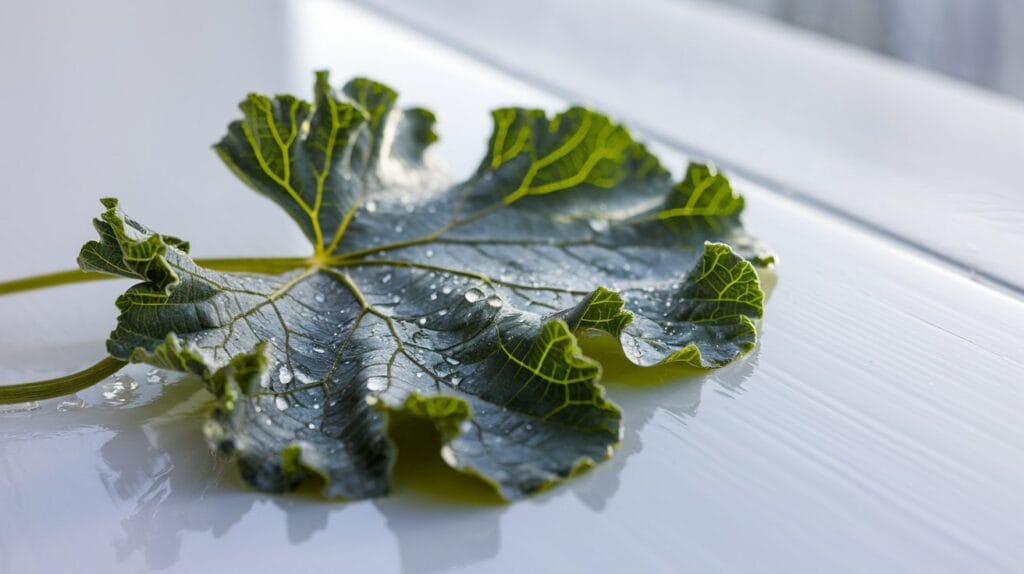
Nutritional Composition
Pumpkin leaves are a powerhouse of nutrients, making them a valuable addition to any diet. Not only are they rich in vitamins and minerals, but they also provide essential fiber and antioxidants.
- Vitamins:
- Vitamin A enhances vision and promotes skin health.
- Vitamin C boosts the immune system and aids collagen production.
- Folate supports cell regeneration and overall growth.
- Minerals:
- Calcium and magnesium strengthen bones and muscles.
- Iron enhances oxygen transport and prevents anemia.
- Fiber:
- Aids digestion while improving gut health.
- Antioxidants:
- Beta-carotene and polyphenols fight oxidative stress.
- Low-Calorie Option:
- Ideal for those managing weight.
Explore more ways to include greens in your diet with this Southeast Asia Brown Rice with Vegetables Recipe.
Health Benefits
Consuming pumpkin leaves regularly provides numerous health advantages. Thanks to their nutrient density, these greens contribute to both preventative care and general health improvement.
- Boosts Immunity: High Vitamin C levels help the body combat infections and recover faster.
- Improves Digestion: The fiber content promotes regular bowel movements and supports gut microbiome health.
- Supports Vision: Vitamin A plays a key role in preventing night blindness and enhancing eye health.
- Lowers Cholesterol: Dietary fiber binds with cholesterol, helping to reduce bad cholesterol (LDL).
- Regulates Blood Sugar: Some studies suggest compounds in pumpkin leaves may improve insulin sensitivity, which is particularly beneficial for diabetics.
- Strengthens Bones: Calcium and magnesium prevent bone loss and maintain density.
For a deeper dive into nutritious eating, consider The Ultimate Guide to Protein Cornbread, which aligns with health-focused dietary practices.
For more insights on the health benefits of green superfoods, check out Harvard Health’s guide on matcha and its possible health benefits
How to Identify Edible Pumpkin Leaves
Identifying the right pumpkin leaves ensures they are both safe and enjoyable to consume. Although all pumpkin plants produce edible leaves, some varieties are more suitable for cooking.
Key Identifiers:
- Appearance: Look for large, heart-shaped, and vibrant green leaves.
- Texture: Young leaves are tender, while older ones may feel coarser.
- Smell: They have a fresh, earthy aroma that resembles other leafy greens.
- Preferred Varieties:
- Cucurbita moschata is popular for its softer texture and milder taste.
- Cucurbita maxima is also widely used in culinary preparations.
Ultimately, choosing young, tender leaves ensures the best texture and flavor for your dishes.
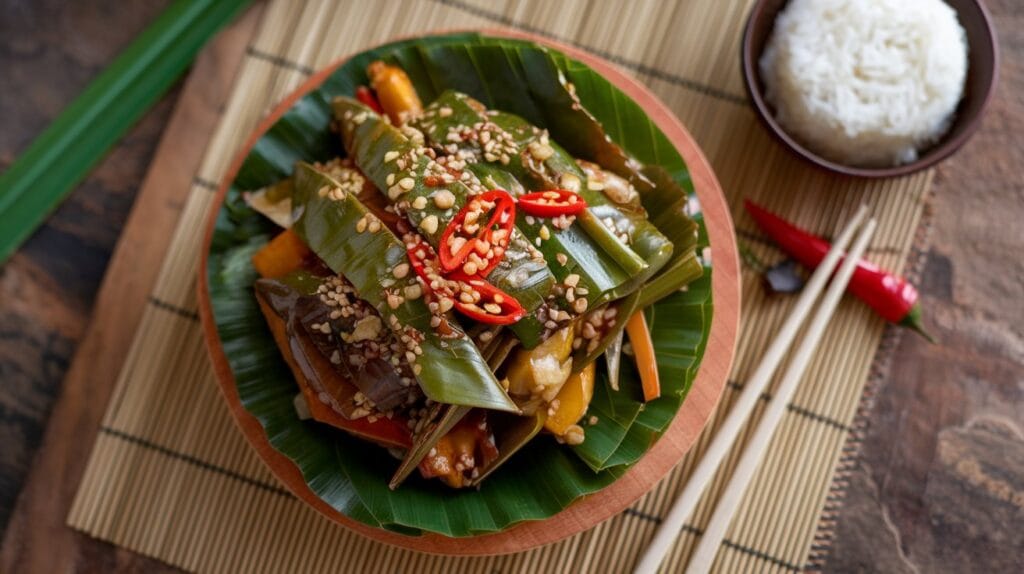
Culinary Uses of Pumpkin Leaves Across the Globe
Pumpkin leaves may vary in preparation methods across the world, but their contribution to global cuisine is undeniable. Here are a few examples:
- African Innovations: A star ingredient in Nigerian Egusi soup or paired with groundnuts in Zimbabwe.
- Asian Inspirations: Often stir-fried with garlic and spices in Southeast Asia.
- Caribbean Classics: Adds depth to soups and callaloo dishes.
Their adaptability extends to modern recipes, too, with pumpkin leaves making an appearance in wraps and smoothies for a healthy twist.
How to Harvest Pumpkin Leaves Without Damaging the Plant
Harvesting pumpkin leaves correctly ensures that the plant remains healthy while providing a continuous supply of greens.
Best Practices:
- Select Young Leaves: These are tender and easier to prepare.
- Use Clean Tools: Sharp scissors or pruning shears prevent unnecessary damage.
- Leave Enough Growth:
- Avoid stripping all leaves from a single vine.
- Retain older leaves to maintain photosynthesis.
- Harvest Early: Cooler morning temperatures help keep the leaves fresh.
- Rotate Harvesting: Collect leaves from different vines to give plants time to recover.
By following these steps, you can enjoy fresh pumpkin leaves throughout the growing season without harming the plant.
For more expert resources on vegetable cultivation and sustainable growing practices, visit Cornell Vegetables
Preparation Techniques for Cooking Pumpkin Leaves
Proper preparation brings out the best flavor and texture in pumpkin leaves. Moreover, it ensures the leaves are safe and easy to digest.
- Wash Thoroughly: Rinse under running water to remove dirt and fine hairs.
- Remove Fibers: Peel off tough stalks and veins from older leaves.
- Blanch:
- Boil briefly in salted water to soften the texture.
- Cool immediately in ice water to preserve the bright green color.
- Steam: Steaming helps retain nutrients while enhancing the flavor.
- Stir-Fry: Cook quickly with garlic, onions, and chili for a flavorful side dish.
- Boil: Add to soups and stews for a hearty, nutritious meal.
Using these techniques ensures that pumpkin leaves shine in your recipes while retaining their nutritional value.
For a perfect side dish pairing, try the Frozen Green Bean Recipes: Cheesy Garlic Roasted.
Top Recipes Featuring Pumpkin Leaves
Pumpkin leaves are a versatile ingredient used in a variety of recipes across different cuisines. They bring a mild flavor and a nutritious punch to any dish. Here are some of the best ways to enjoy pumpkin leaves:
- Pumpkin Leaf Stew: This hearty stew combines chopped pumpkin leaves with tomatoes, onions, and spices. Add a protein like fish or beef for a complete meal.
- Pumpkin Leaf Smoothies: Blend raw or lightly steamed pumpkin leaves with fruits, yogurt, and a touch of honey for a nutrient-packed drink.
- Pumpkin Leaf Stir-Fry: Stir-fry leaves with garlic, chili, and a dash of soy sauce for a quick and healthy side dish.
- Pumpkin Leaf Soup: In many cultures, pumpkin leaves are simmered with meat or beans to create a nourishing soup.
- Pumpkin Leaf Salad: Toss young, tender leaves with a tangy dressing for a refreshing salad.
🍲 Delicious Ways to Enjoy Pumpkin Leaves
- Pumpkin Leaf Soup: Combine with broth and spices for a warming dish. Get creative with flavor by checking out these homemade vegetable soup tips.
- Stir-fry with Garlic: Quick and nutrient-packed side.
- Mixed with Grains: Add to rice bowls like the Southeast Asia Brown Rice with Vegetables Recipe.
These recipes not only showcase the versatility of pumpkin leaves but also highlight their nutritional value.
Can Pumpkin Leaves Be Eaten Raw?
While pumpkin leaves can technically be eaten raw, it is not the most common preparation method. The leaves, known for their slightly coarse texture and fine hairs, can feel rough on the palate when uncooked. However, for those who prefer raw consumption, there are ways to improve the experience. For instance, you can choose young and tender leaves, as they are softer and more palatable. Additionally, marinating the leaves in lemon juice or vinegar can help reduce their natural coarseness. Therefore, although eating pumpkin leaves raw is possible, cooking them is a more popular choice due to the enhanced texture and flavor it offers.
- Choose Young Leaves: Tender, young pumpkin leaves are softer and less fibrous, making them better suited for raw dishes.
- Wash Thoroughly: Rinse the leaves well to remove dirt and any potential irritants.
- Pair with Complementary Flavors: Add raw pumpkin leaves to salads or smoothies, balancing their earthy flavor with tangy dressings or sweet fruits.
While eating pumpkin leaves raw preserves their nutrients, cooking often enhances their texture and flavor, making them more enjoyable.
Pumpkin Leaves for Pets: Are They Safe?
Pumpkin leaves are generally safe for pets, including dogs, cats, and livestock, provided they are prepared correctly. They can serve as a natural source of essential nutrients, promoting better health for your animals.
Key Considerations:
- For Dogs and Cats: Cooked leaves can be added in small amounts to their meals, aiding digestion and boosting nutrient intake.
- For Livestock: Animals such as goats and rabbits can benefit from pumpkin leaves as a nutritious feed.
- Precautions:
- Always ensure the leaves are pesticide-free.
- Cook the leaves to eliminate any natural irritants.
- Introduce them gradually to prevent digestive upset.
Incorporating it into your pets’ diet not only reduces waste but also provides a cost-effective way to support their well-being.be a cost-effective way to boost their diet while reducing food waste.
Pumpkin Leaves in Traditional Medicine
For centuries, it have played a significant role in traditional medicine. They are valued for their nutritional properties and potential health benefits.
- Immune Support: The high Vitamin C content strengthens immunity, helping the body combat infections more effectively.
- Digestive Health: Rich in fiber, they are often used to alleviate constipation and support gut health.
- Diabetes Management: Some traditional practices suggest they may help regulate blood sugar levels.
- Wound Healing: Crushed they are sometimes applied topically to treat minor cuts and burns.
Even though it have been used in ancient remedies, it is important to consult a healthcare professional before relying on them for medical purposes.efore using them for medical purposes.
Environmental Benefits of Growing Pumpkins for Their Leaves
Growing pumpkins for their leaves benefits not only your health but also the environment. By utilizing the plant’s greens, you can support sustainability in several ways:
- Sustainable Crop: Pumpkins thrive in various climates, requiring minimal maintenance, which makes them ideal for eco-friendly agriculture.
- Reduces Food Waste: Using the leaves ensures no part of the plant goes to waste.
- Improves Soil Health: Pumpkin plants enrich the soil through their root systems, reducing erosion and increasing fertility.
- Promotes Biodiversity: Pumpkin plants attract beneficial pollinators like bees, enhancing biodiversity in your garden.
By choosing to grow and consume it, you contribute to a more sustainable and environmentally friendly food system.
Potential Risks and Precautions When Using Pumpkin Leaves
Although they are generally safe to consume, you should consider certain risks and take appropriate precautions:
- Allergic Reactions: Some individuals may experience mild irritation from the fine hairs on the leaves.
- Oxalates: Like many leafy greens, they contain oxalates, which may contribute to kidney stones if consumed in excessive amounts.
- To avoid chemical contamination, thoroughly wash the leaves to remove pesticides or harmful residues.
- Proper Cooking: Cooking removes potential irritants and reduces oxalate content, making the leaves safer to eat.
By following these precautions, you can safely enjoy pumpkin leaves as part of a healthy and balanced diet. Furthermore, consuming them in moderation allows you to benefit from their nutrients without any concerns. Therefore, incorporating pumpkin leaves into your meals is both a practical and nutritious choice.
Creative Recipes with Pumpkin Leaves
- Pumpkin Leaf & Squash Stir-fry – A nutritious combo, similar to the Chinese Squash Recipes (Kabocha, Vegan).
- Hearty Leafy Soup – Inspired by the Easy Swamp Soup Recipe, but with pumpkin leaves for extra nutrients.
- Pumpkin Leaf & Cornbread Pairing – Serve with warm, crumbly Southern Cornbread for a comforting meal.
Where to Buy Pumpkin Leaves and How to Store Them
Finding fresh it depends largely on your location. However, you can often source them from specialized markets or purchase them through online retailers.
Where to Buy:
- Farmers’ markets frequently sell fresh leaves in regions where they are a dietary staple.
- Ethnic grocery stores catering to African, Asian, or Caribbean cuisines are good sources.
- Online platforms often offer dried or frozen pumpkin leaves for convenience.
How to Store:
- Fresh Leaves: Wrap them in a damp paper towel and refrigerate for up to three days.
- Freezing: Blanch before freezing to preserve texture and nutrients.
- Dried Leaves: Store in an airtight container in a cool, dark place for several months.
Proper storage ensures you can enjoy pumpkin leaves year-round without compromising their quality..
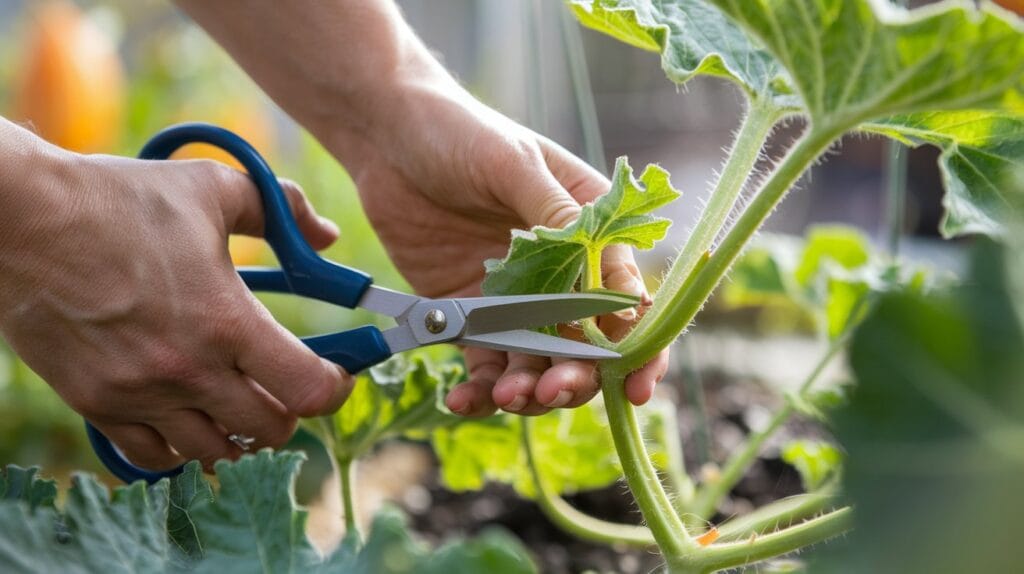
FAQs About Pumpkin Leaves
What Are Pumpkin Leaves?
Pumpkin leaves are the edible greens of the pumpkin plant, known for their mild, earthy taste and impressive nutrition. Common in African, Asian, and Caribbean cuisines, they’re rich in vitamins A and C, iron, calcium, and fiber.
What Are the Benefits of Eating Pumpkin Leaves?
Pumpkin leaves support digestion, boost immunity, strengthen bones, and may help regulate blood sugar. Their high fiber and antioxidant content also promote heart and skin health.
How Do You Cook Pumpkin Leaves?
You can blanch, steam, or stir-fry them with garlic, onions, and chili. They’re also great in soups and stews, adding nutrients and a delicate flavor.
Can You Eat Pumpkin Leaves Raw?
Yes, but it’s not common. Raw pumpkin leaves are coarse; choose young, tender leaves if eating them raw. Cooking softens them and enhances taste.
Are Pumpkin Leaves Safe for Pets?
Yes! Cooked pumpkin leaves are safe for dogs, cats, and livestock in moderation. Avoid pesticides and serve small portions.
Conclusion
They are a versatile, nutritious, and eco-friendly ingredient that deserves a place in every kitchen. Whether you enjoy them in traditional recipes or incorporate them into modern dishes, these greens provide a unique way to enhance your meals. By learning how to prepare, store, and use it effectively, you can unlock their full potential. Start exploring their benefits today, and add this nutrient-rich ingredient to your diet for both health and sustainability.
Print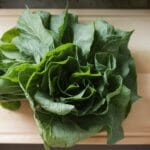
🌿 Pumpkin Leaves: Nutrition, Health Benefits & How to Cook Them
- Total Time: 20 minutes
- Yield: 2–4 servings
Description
Pumpkin leaves are one of nature’s most underrated superfoods — tender, flavorful, and bursting with nutrients. Commonly enjoyed across Africa, Asia, and the Caribbean, they’re packed with vitamin A, C, iron, calcium, and more.
Ingredients
- Fresh pumpkin leaves (young and tender)
- Garlic cloves
- Onions
- Chili peppers (optional)
- Salt
- Water
- Olive oil or vegetable oil
Instructions
- Wash pumpkin leaves thoroughly to remove dirt and fine hairs.
- Remove tough stalks and veins from older leaves.
- Blanch leaves in salted boiling water for 1–2 minutes, then cool in ice water.
- Heat oil in a pan and sauté chopped onions and garlic.
- Add chili if desired and stir-fry briefly.
- Add blanched pumpkin leaves and cook for 3–5 minutes.
- Season with salt to taste and serve as a side dish or main.
Notes
Choose young leaves for best texture. Blanching softens hairs and preserves vibrant color.
- Prep Time: 10 minutes
- Cook Time: 10 minutes
- Category: Side Dish
- Method: Stir-Fry
- Cuisine: Global Fusion
Nutrition
- Serving Size: 1 cup cooked
- Calories: 45
- Sugar: 1g
- Sodium: 80mg
- Fat: 3g
- Saturated Fat: 0.5g
- Unsaturated Fat: 2g
- Trans Fat: 0g
- Carbohydrates: 4g
- Fiber: 2g
- Protein: 2g
- Cholesterol: 0mg
Keywords: pumpkin leaves, leafy greens, superfood, stir-fry, healthy side dish

